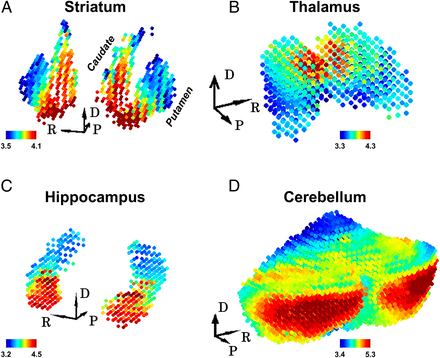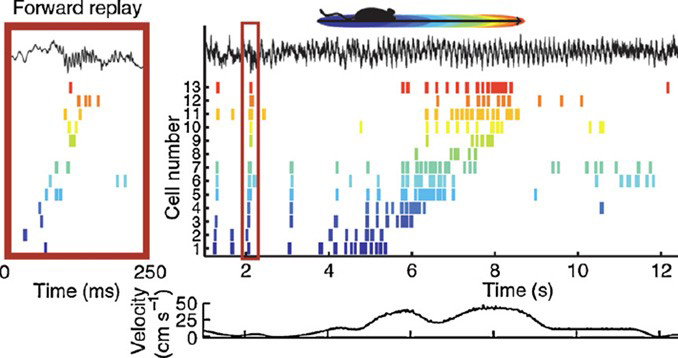Friday, 26 November 2021
Study on the intrinsic, dynamic activity of the brain confirms a very general principle of its organization
 Scientists have known for some time that for our brains to perform any given task, a very short-term sensory memory function must co-operate with some of our longer-term memory functions. Scientists have also known that such encoding on various time scales is correlated with the frequencies at which the neurons oscillate in the associated parts of our brain, ranging from high frequencies in the sensory cortical areas to very low frequencies in the multi modal associative areas. But in an article entitled Hierarchical dynamics as a macroscopic organizing principle of the human brain, published in the journal PNAS in August 2020, authors Ryan Raut, Abraham Snyder and Marcus Raichle showed that this important principle can be generalized not only to the entire cortex, but also to several sub-structures within it. Throughout all of them, the temporal profile of the spontaneous oscillations in the brain seems to be structured along gradients starting in the high-frequency sensory areas and proceeding to multi modal, higher-function areas where the oscillation frequencies are far lower. (more…)
Scientists have known for some time that for our brains to perform any given task, a very short-term sensory memory function must co-operate with some of our longer-term memory functions. Scientists have also known that such encoding on various time scales is correlated with the frequencies at which the neurons oscillate in the associated parts of our brain, ranging from high frequencies in the sensory cortical areas to very low frequencies in the multi modal associative areas. But in an article entitled Hierarchical dynamics as a macroscopic organizing principle of the human brain, published in the journal PNAS in August 2020, authors Ryan Raut, Abraham Snyder and Marcus Raichle showed that this important principle can be generalized not only to the entire cortex, but also to several sub-structures within it. Throughout all of them, the temporal profile of the spontaneous oscillations in the brain seems to be structured along gradients starting in the high-frequency sensory areas and proceeding to multi modal, higher-function areas where the oscillation frequencies are far lower. (more…)
From the Simple to the Complex | Comments Closed
Monday, 8 November 2021
An example of the importance of our brain rhythms

A large majority of the neurons in the human brain display rhythmic activity patterns—in other words, they send out one nerve impulse, then go quiet, then send out another nerve impulse, and so on. These patterns, which have different frequencies, are one of the neurons’ preferred means of communicating with one another. But unfortunately, college and university neuroscience textbooks discuss the brain’s neural rhythms only very superficially, even though they are actually starting to shed light on many different scientific mysteries. One good example is the consolidation of learning, which is associated with certain types of neural activity in the hippocampus. That’s just about all that a lot of textbooks have to say on the subject—nothing about what specific mechanism might be involved. Or you might read that your recently acquired memories are consolidated while you’re asleep or reconsolidated when you retrieve them, and that the hippocampus is somehow involved, but that’s it. (more…)
Memory and the Brain | Comments Closed







